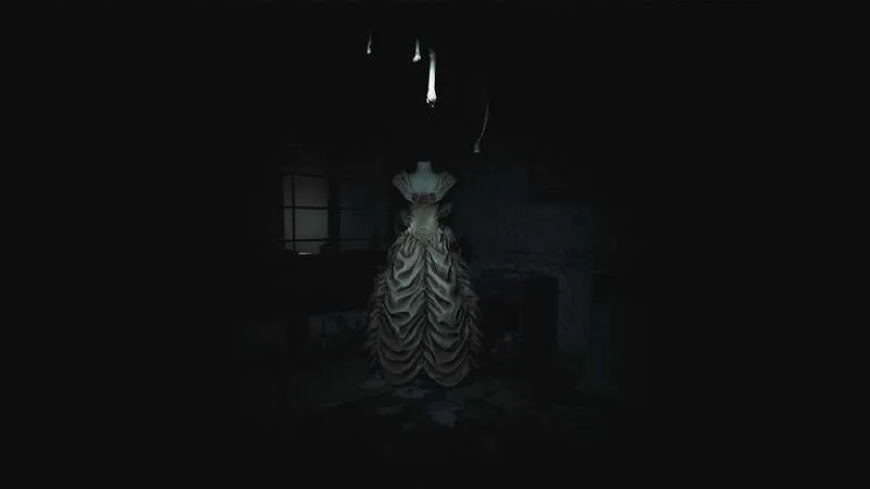Understanding the Rise of Horror Multiplayer Games PC: A Modern Social Phenomenon
Horror multiplayer games on PC are redefining social gaming by blending fear, cooperation, and unpredictability. Gameranx explores how these titles create shared emotional experiences, build real-world skills, and reflect a shift in player preferences—from solo scares to group survival. Discover why this genre is becoming a lasting gaming phenomenon.
Over the past few years, the gaming landscape has shifted significantly. While single-player titles continue to thrive, there's a clear and growing interest in games designed for shared experiences. One standout genre that has gained momentum during this shift is horror multiplayer games PC. These games do more than entertain — they offer shared tension, cooperation under pressure, and emotional unpredictability that few other genres can replicate.
What Makes Multiplayer Horror Different?
Unlike traditional horror games that are experienced in isolation, multiplayer horror introduces human unpredictability and group dynamics into the mix. It creates a more interactive layer of fear — not just what lurks in the game environment, but how teammates behave under stress.
Key Characteristics of the Genre:
|
Element |
Impact |
|
Shared fear |
Players experience tension together, amplifying emotional response. |
|
Group dynamics |
Decisions can help or hinder the team — cooperation becomes essential. |
|
Replayability |
Unpredictable outcomes due to varied player behavior. |
This genre blends horror mechanics with social interaction. The suspense, jump scares, and survival elements stay intact, but are now influenced by real-time decisions made by others, adding a level of immersion that solo campaigns rarely match.
Why Players Are Drawn to It
The popularity of horror multiplayer games PC isn’t just about thrills — it’s about how these games connect people. There’s a surprising element of camaraderie that comes from trying to survive alongside others, especially when the gameplay is filled with uncertainty and dread.
Major Appeal Factors:
-
Emotional engagement: Fear is a strong emotion, and experiencing it with others strengthens social bonds.
-
Unpredictability: No two matches are the same, especially when other players have free agency.
-
Adrenaline rush: The suspense and danger of every moment keep players engaged.
-
Emergent gameplay: Players often create their own narratives through decisions, failures, and teamwork.
The Social Psychology of Shared Fear
One of the most fascinating aspects of horror multiplayer games PC is the psychological component. When people are scared in a group setting, they tend to form quicker connections, trust faster, and bond over shared experiences. This mirrors real-life survival psychology — in uncertain environments, collaboration becomes instinctual.
How This Shows Up in Gaming:
-
Players are more likely to help each other under pressure.
-
Team strategies evolve as stress levels increase.
-
Unexpected leadership roles often emerge mid-game.
In other words, fear enhances group cohesion in ways few other genres do. These aren’t just games — they are informal experiments in social dynamics.
Design Patterns Behind Multiplayer Horror
Game developers designing for this space typically follow a few patterns. Although the visual elements and settings may vary, there are core mechanics that define the genre’s identity.
Common Features Include:
-
Asymmetrical roles: One player may play the antagonist, while others must work together to escape or survive.
-
Time-limited missions: Survival must occur within a set time frame, increasing tension.
-
Limited resources: Players must share or fight over scarce items like light sources or tools.
-
Environmental storytelling: Story elements unfold as the team explores the map.
These mechanics ensure that gameplay is never static. Players must constantly adapt, respond to each other’s choices, and stay alert.
Benefits Beyond Entertainment
Although often overlooked, horror multiplayer games PC offer more than just an adrenaline fix. They develop real skills, particularly in communication and problem-solving under stress.
Skills Players Tend to Build:
-
Coordination and planning
-
Crisis communication
-
Situational awareness
-
Conflict resolution within groups
These soft skills, though developed in a virtual space, can have applications beyond gaming. They’re especially relevant in team-oriented environments where quick thinking and group trust are essential.
Is This a Genre with Staying Power?
Trends in gaming can shift rapidly, but horror multiplayer games PC show signs of long-term viability. As long as developers continue innovating within the genre and players remain interested in social gameplay with emotional intensity, this category is likely to remain relevant.
Factors Supporting Longevity:
-
A strong niche community that supports indie and AAA titles alike
-
Ongoing demand for immersive and emotional multiplayer experiences
-
Advancements in game mechanics that make social horror increasingly dynamic
These games may not appeal to everyone, but their unique blend of interaction and atmosphere has established them as a distinct pillar within the multiplayer scene.
Conclusion
The rise of horror multiplayer games PC reflects a larger shift in how players want to experience games — not in isolation, but in cooperation. The genre’s blend of fear, uncertainty, and teamwork offers a compelling form of entertainment that challenges not only one’s gaming skills, but also how we interact with others under pressure.
Whether you're drawn in by the psychological tension, the unpredictable teamwork, or the simple thrill of being scared with friends, there's no denying the cultural relevance of this genre. It speaks to something very human — our desire to connect, even when everything around us is falling apart.





































